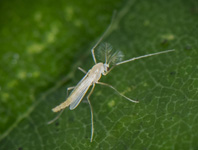Abstract
Ten species of Haploniscidae Hansen, 1916 were sampled in Icelandic waters during expeditions in the framework of the BIOICE project. Nine of these were known from the North Atlantic Ocean, i.e. Haploniscus aduncus Lincoln, 1985, H. ampliatus Lincoln, 1985, Haploniscus angustus Lincoln, 1985, H. bicuspis (Sars, 1877), H. foresti Chardy, 1974, H. hamatus Lincoln, 1985, H. spinifer Hansen, 1916, Antennuloniscus simplex Lincoln, 1985 and Chauliodoniscus armadilloides (Hansen, 1916). All but H. bicuspis and H. angustus were restricted to the Atlantic Ocean south of the Greenland-Iceland-Faeroe Ridge (GIF Ridge), while H. bicuspis occurred at considerable depth ranges both north and south of the GIF Ridge. A new species, Haploniscus astraphes n. sp., is described based on material from the Denmark Strait, North Atlantic and the Guinea Basin, South Atlantic. H. astraphes n. sp. belongs to a group of Haploniscus species closely related to the genus Antennuloniscus and shares several characters with species from that genus, especially the spine row on pleopod 1, the stout sensory seta on the carpus of pereopod 7 and characters of the antennae. H. astraphes n. sp. is characterized by a rectangular body shape, the straight frontal margin of the head and the strongly convex posterior margin of the pleotelson.
References
Ahyong, S.T., Lowry, J.K., Alonso, M., Bamber, R.N., Boxshall, G.A., Castro, P., Gerken, S., Karaman, G.S., Goy, J.W., Jones, D.S., Meland, K., Rogers, D.C. & Svavarsson, J. (2011) Subphylum Crustacea Brünnich, 1772. In: Zhiang, Z.-Q. (Ed.), Animal biodiversity: An outline of higher-level classification and survey of taxonomic richness. Zootaxa, 3148, 165–191.
Birstein, J.A. (1969) Crustacea Isopoda from the Romanche Trench. Bulletin of Moscow Society of Naturalists, Biological Series, 74 (3), 50–59.
Boyko., C.B., Bruce, N.L., Merrin, K.L., Ota, Y., Poore, G.C.B., Taiti, S., Schotte, M. & Wilson, G.D.F. (Eds.) (2008 onwards). World list of marine freshwater and terrestrial isopod crustaceans. Available from: http://www.marinespecies.org/isopoda (accessed 22 November 2016)
Brattegard, T. & Fosså, J.H. (1991) Replicability of an epibenthic sampler. Journal of the Marine Biological Association of the United Kingdom, 71, 153–166.
https://doi.org/10.1017/S0025315400037462Brenke, N. (2005) An epibenthic sledge for operations on marine soft bottom and bedrock. Marine Technology Society Journal, 39 (2), 10–21.
https://doi.org/10.4031/002533205787444015Brix, S. & Svavarsson, J. (2010) Distribution and diversity of desmosomatid and nannoniscid isopods (Crustacea) on the Greenland-Iceland-Faeroe Ridge. Polar Biology, 33, 525–530.
https://doi.org/10.1007/s00300-009-0729-8Brökeland, W. (2006) Three species of the isopod crustacean genus Antennuloniscus Menzies, 1962 (Asellota: Haploniscidae) from the Southern Ocean. Zootaxa, 1115, 1–29.
Brökeland, W. (2010) Redescription of Haploniscus rostratus (Menzies, 1962) (Crustacea: Peracarida: Isopoda) with observations on the postmarsupial development, size ranges and distribution. Zootaxa, 2521, 1–25.
Brökeland, W. & Wägele, J.-W. (2004) Redescription of three species of Haploniscus Richardson, 1908 (Isopoda, Asellota, Haploniscidae) from the Angola Basin. Organisms Diversity & Evolution, 4, 237–239. [Electronic Supplement, 7, 1–40]
Chardy, P. (1974) Les Haploniscidae (Crustacés Isopodes Asellotes) de l’Atlantique. Description de huit espèces nouvelles. Bulletin du Musèum National d’Histoire Naturelle (3) Zoologie, 167 (243), 1137–1166.
Dijkstra, H.H., Warén, A. & Guðmundsson, G. (2009) Pectinoidea (Mollusca: Bivalvia) from Iceland. Marine Biology Research, 5, 207–243.
https://doi.org/10.1080/17451000802425643Gurjanova, E.F. (1933) Die marinen Isopoden der Arktis. Fauna Arctica, 6 (5), 391–470.
Hansen, H.J. (1916) Crustacea Malacostraca. The order Isopoda. The Danish Ingolf Expedition, 3 (5), 1–262.
Hansen, B. & Østerhus, S. (2000) North Atlantic-Nordic Seas exchanges. Progress in Oceanography, 45, 109–208.
https://doi.org/10.1016/S0079-6611(99)00052-XHarrison, K. (1989) Are deep-sea asellote isopods infaunal or epifaunal. Crustaceana, 56, 317–319.
https://doi.org/10.1163/156854089X00284Kavanagh, F.A. (2009) A catalogue of the Asellota (Crustacea: Isopoda) off the west coast of Ireland and Britain, from 100–5000 m. Bulletin of the Irish biogeographical Society, 33, 14–75.
Lincoln, R.J. (1985a) The marine Fauna of New Zealand: Deep-sea Isopoda Asellota, family Haploniscidae. Memoirs of the New Zealand Oceanographic Institute, 94, 1–56.
Lincoln, R.J. (1985b) Deep-sea asellote isopods of the north-east Atlantic: the family Haploniscidae. Journal of Natural History, 19, 655–695.
https://doi.org/10.1080/00222938500770411Meyer-Löbbecke, A., Brandt, A. & Brix, S. (2014) Diversity and abundance of deep-sea Isopoda along the Southern Polar Front: Results from the SYSTCO I and II expeditions. Deep-Sea Research II, 108, 76–84.
https://doi.org/10.1016/j.dsr2.2014.06.006Malmberg, S.-A. & Valdimarsson, H. (2003) Hydrographic conditions in Icelandic waters, 1990–1999. ICES Marine Science Symposia, 219, 50–60.
Menzies, R.J. (1962) The isopods of abyssal depths in the Atlantic Ocean. Vema Research Series, 1, 79–206.
Negoescu, I. & Svavarsson, J. (1997) Anthurideans (Crustacea, Isopoda) from the North Atlantic and the Arctic Ocean. Sarsia, 82, 159–202.
https://doi.org/10.1080/00364827.1997.10413650Rothlisberg, P.C. & Pearcy, W.G. (1977) An epibenthic sampler used to study the ontogeny of vertical migration of Pandalus jordani (Decapoda, Caridea). Fisheries Bulletin, 74, 994–997.
Sneli, J.-A. (1998) A simple benthic sledge for shallow and deep-sea sampling. Sarsia, 83, 69–72.
https://doi.org/10.1080/00364827.1998.10413670Stefánsson, U. (1962) North Icelandic waters. Rit Fiskideildar, 3, 1–269.
Stransky, B. & Svavarsson, J. (2006) Astacilla boreaphilis sp. nov. (Crustacea: Isopoda: Valvifera) from shallow and deep North Atlantic waters. Zootaxa, 1259, 1–23.
Svavarsson, J. (1988) Bathyal and abyssal Asellota (Crustacea, Isopoda) from the Norwegian, Greenland, and North Polar Seas. Sarsia, 73, 83–106.
https://doi.org/10.1080/00364827.1988.10420676Svavarsson, J., Strömberg, J.-O. & Brattegard, T. (1993) The deep-sea asellote (Isopoda, Crustacea) fauna of the Northern Seas: species composition, distributional patterns and origin. Journal of Biogeography, 20, 537–555.
https://doi.org/10.2307/2845725Wägele, J.-W. (1983) The homology of antennal articles in Isopoda. Crustaceana, 45 (1), 31–37.
https://doi.org/10.1163/156854083X00163Weisshappel, J.B. (2001) Distribution and diversity of the hyperbenthic amphipod family Calliopiidae in the different seas around the Greenland-Iceland-Faeroe-Ridge. Sarsia, 86, 143–151.
https://doi.org/10.1080/00364827.2001.10420469Wolff, T. (1962) The systematics and biology of bathyal and abyssal Isopoda Asellota. Galathea Report, 6, 1–320.

